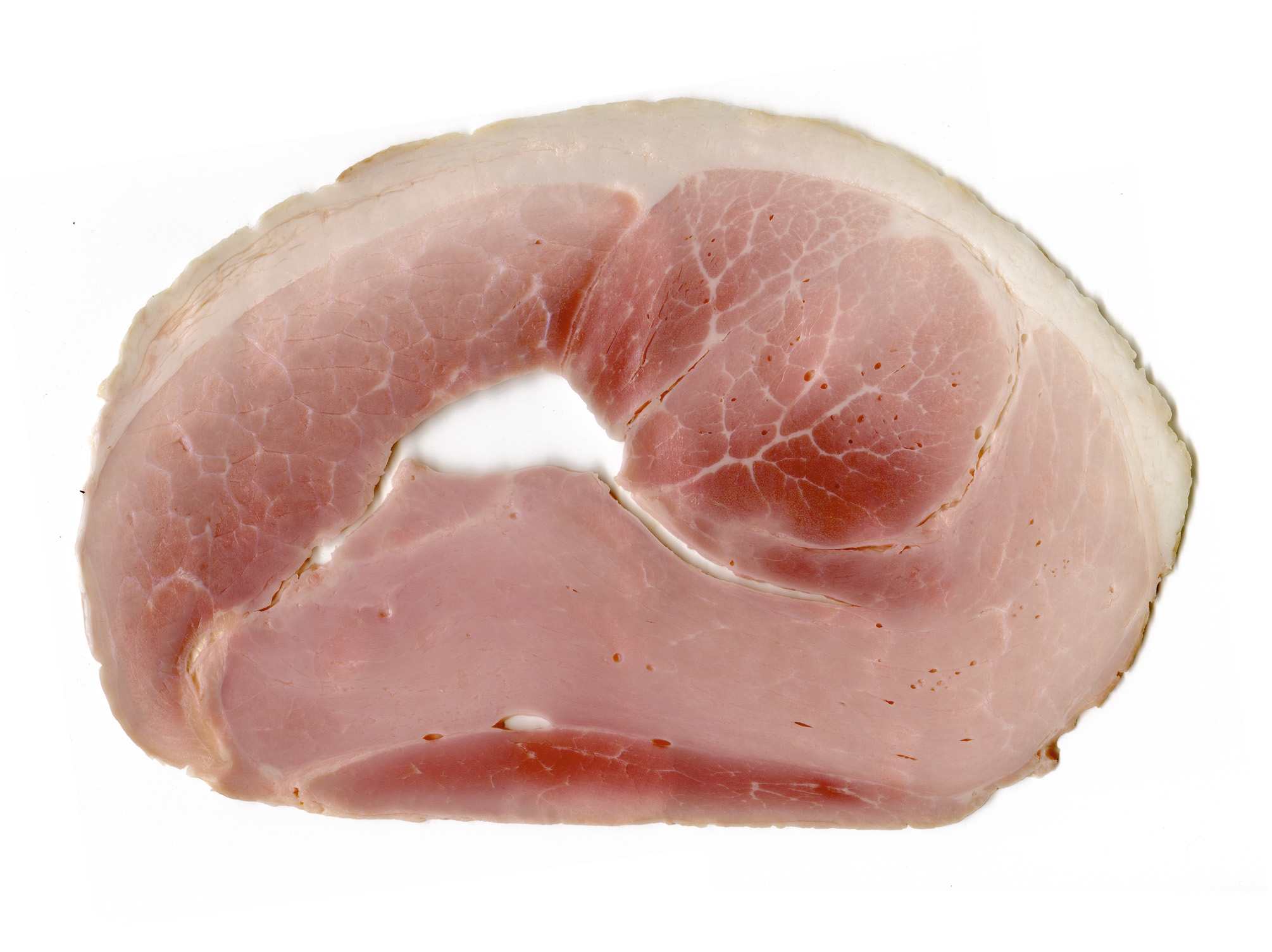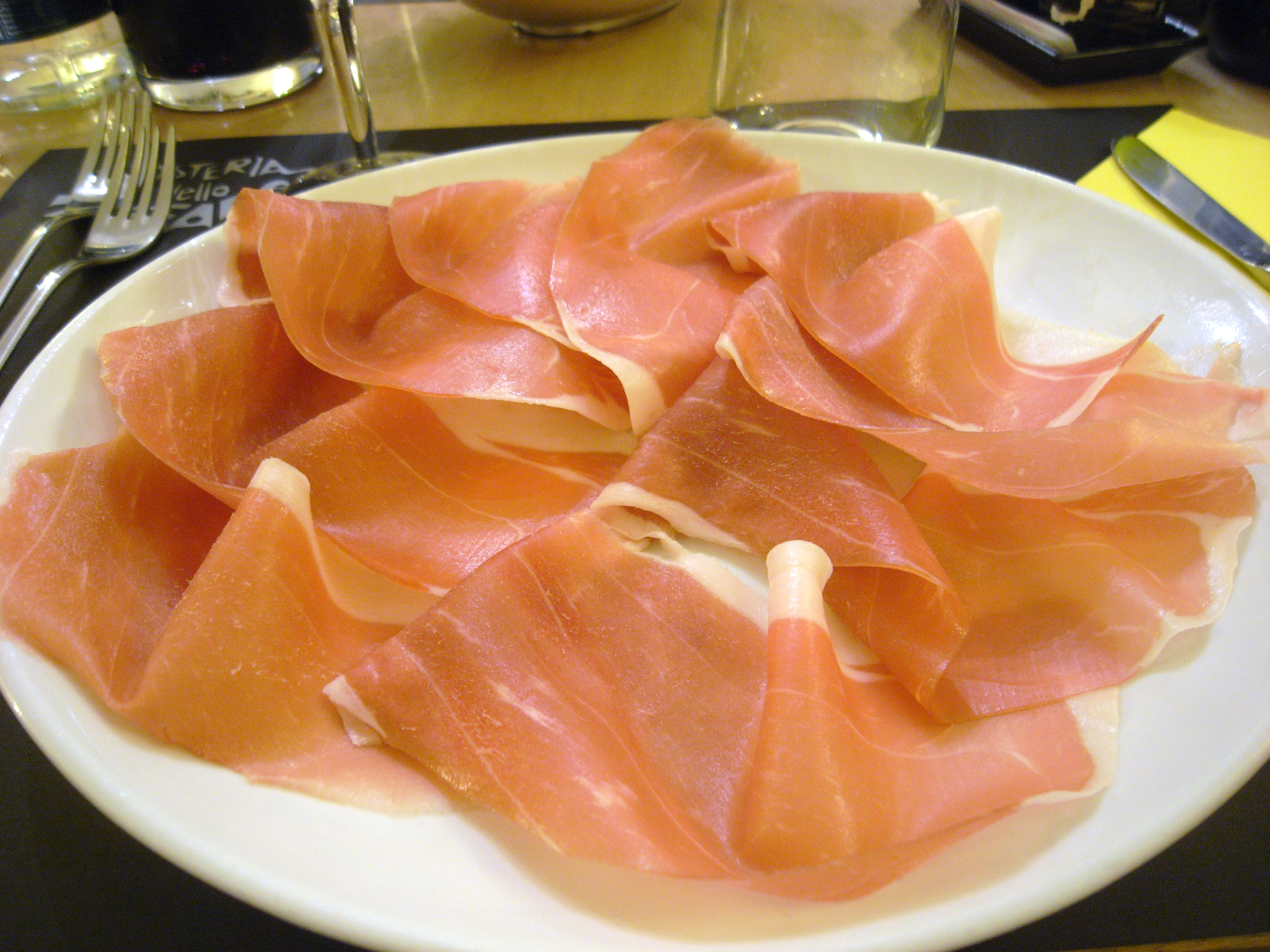|
Ham
Ham is pork from a leg cut that has been preserved by wet or dry curing, with or without smoking."Bacon: Bacon and Ham Curing" in ''Chambers's Encyclopædia''. London: George Newnes, 1961, Vol. 2, p. 39. As a processed meat, the term "ham" includes both whole cuts of meat and ones that have been mechanically formed. Ham is made around the world, including a number of regional specialties, such as Westphalian ham and some varieties of Spanish ''jamón''. In addition, numerous ham products have specific geographical naming protection, such as prosciutto di Parma in Europe, and Smithfield ham in the US. History The preserving of pork leg as ham has a long history, with traces of production of cured ham among the Etruscan civilization known in the 6th and 5th century BC. Cato the Elder wrote about the "salting of hams" in his ' tome around 160 BC. There are claims that the Chinese were the first people to mention the production of cured ham. ' claims an origin from Ga ... [...More Info...] [...Related Items...] OR: [Wikipedia] [Google] [Baidu] |
Chambers's Encyclopædia
''Chambers's Encyclopaedia'' was founded in 1859Chambers, W. & R"Concluding Notice"in ''Chambers's Encyclopaedia''. London: W. & R. Chambers, 1868, Vol. 10, pp. v–viii. by William and Robert Chambers of Edinburgh and became one of the most important English language encyclopaedias of the 19th and 20th centuries, developing a reputation for accuracy and scholarliness that was reflected in other works produced by the Chambers publishing company. The encyclopaedia is no longer produced. A selection of illustrations and woodblocks used to produce the first two editions of the encyclopaedia can be seen on digital resourcehosted on thNational Museums Scotland website ''Chambers's Information for the People'' Before publishing an encyclopedia, Chambers produced a smaller publication, ''Chambers's Information for the People''. This began as a serial publication in 1835. Like the ''Penny Cyclopaedia'', and others of the time it was meant to be a cheap reference work that was ta ... [...More Info...] [...Related Items...] OR: [Wikipedia] [Google] [Baidu] |
Jinhua Ham
Jinhua ham () is a type of specialty dry-cured ham named after the city of Jinhua, where it is produced, in Zhejiang province, China. The ham is used in Chinese cuisines to flavor stewed and braised foods as well as for making the stocks and broths of many Chinese soups. The ham was awarded first prize in the 1915 Panama International Merchandise Exhibition. Production Jinhua ham is traditionally produced using the hind legs of a breed of pigs native to China known as the "two ends black" (兩頭烏), which have black hair growing on their heads and hindquarters with white midsections. This breed is quick to mature; it has excellent meat quality and thin skin. Ham production begins when air temperatures drops below . The process takes approximately 8 to 10 months to complete. Ham production is separated into six stages, starting in the winter and ending the following autumn: #Meat preparation: Well-developed and undamaged legs are selected and the "open" side of the ... [...More Info...] [...Related Items...] OR: [Wikipedia] [Google] [Baidu] |
Prosciutto Di Parma
''Prosciutto crudo'', in English often shortened to prosciutto ( , ), is Italian uncooked, unsmoked, and dry-cured ham. ''Prosciutto crudo'' is usually served thinly sliced. Several regions in Italy have their own variations of ''prosciutto crudo'', each with degrees of protected status, but the most prized are Prosciutto di Parma DOP from Emilia-Romagna and Prosciutto di San Daniele DOP from Friuli Venezia Giulia. Unlike Speck (Speck Alto Adige PGI) from the South Tyrol region, prosciutto is not smoked. In Italian, ''prosciutto'' means any kind of ham, either dry-cured (''prosciutto crudo'' or simply ''crudo'') or cooked ('' prosciutto cotto''), but in English-speaking countries, it usually means either Italian ''prosciutto crudo'' or similar hams made elsewhere. However, the word "prosciutto" itself is not protected; cooked ham may legally be, and in practice is, sold as ''prosciutto'' (usually as ''prosciutto cotto'', and from Italy or made in the Italian style) in English- ... [...More Info...] [...Related Items...] OR: [Wikipedia] [Google] [Baidu] |
Jamón
''Jamón'' (, pl. ''jamones'') is a kind of dry-cured ham produced in Spain. It is one of the most globally recognized food items of Spanish cuisine. It is also regularly a component of tapas. Most ''jamón'' is commonly called ''jamón serrano'' in Spain''.'' ''Jamón'' is the Spanish word for ham. As such, other ham products produced or consumed in Spanish-speaking countries may also be called by this name. Description ''Jamón'' is typically consumed in slices, either manually carved from a pig's hind leg held on a ''jamonero'' stand using a sharp thin slicing knife, or cut from the deboned meat with a rotatory cold-cut slicer. It's also regularly consumed in any shape in small portions. As a product, ''Jamón'' is similar to Portuguese '' presunto'' and to Italian ''prosciutto'', but the production differs by a longer curing phase (up to 18 months), giving it a dryer texture, deeper color and stronger flavour than the former. A whole ''Jamón'' leg is considerably cheap ... [...More Info...] [...Related Items...] OR: [Wikipedia] [Google] [Baidu] |
Smithfield Ham
Smithfield ham is a specific form of country ham finish- cured in the town of Smithfield in Isle of Wight County in the Hampton Roads region of Virginia, U.S. History The first record of the commercial sale of cured "Smithfield Ham" is a receipt to Ellerston and John Perot on the Dutch Caribbean Island of St Eustatius, dating from 1779. The Commonwealth of Virginia first regulated usage of the term "Smithfield Ham" in a 1926 Statute passed by its General Assembly stating: The "peanut-fed" and "peanut-belt" stipulations were removed in 1966. The present statute reads: 3.2-5419">LIS > Code of Virginia > 3.2-5419/ref> While it is unclear whether the green pork (the raw product of the cured ham) may come from hogs raised and slaughtered in other than Smithfield, Virginia, the statute stipulates that the six-month (minimum duration) curing clock is to begin when the green pork is "introduced to dry salt", and that through the entire duration of the process, the ham and its pro ... [...More Info...] [...Related Items...] OR: [Wikipedia] [Google] [Baidu] |
George Newnes Ltd
George Newnes Ltd is a British publisher. The company was founded in 1891 by George Newnes (1851–1910), considered a founding father of popular journalism. Newnes published such magazines and periodicals as '' Tit-Bits'', '' The Wide World Magazine'', ''The Captain'', '' The Strand Magazine'', '' The Grand Magazine'', '' John O'London's Weekly'', '' Sunny Stories for Little Folk'', '' Woman's Own'', and the ''"Practical"'' line of magazines overseen by editor Frederick J. Camm. Long after the founder's death, Newnes was known for publishing ground-breaking consumer magazines such as '' Nova''. Newnes published books by such authors as Enid Blyton, Hall Caine, Richmal Crompton, Sir Arthur Conan Doyle, George Goodchild, W. E. Johns, P. G. Wodehouse, and John Wyndham. Initially an independent publisher, Newnes became an imprint of the International Publishing Company in 1961. Today, books under the Newnes imprint continue to be published by Elsevier. History Origins ... [...More Info...] [...Related Items...] OR: [Wikipedia] [Google] [Baidu] |
Curing (food Preservation)
Curing is any of various food preservation and flavoring processes of foods such as meat, fish and vegetables, by the addition of salt, with the aim of drawing moisture out of the food by the process of osmosis. Because curing increases the solute concentration in the food and hence decreases its water potential, the food becomes inhospitable for the microbe growth that causes food spoilage. Curing can be traced back to antiquity, and was the primary method of preserving meat and fish until the late 19th century. Dehydration was the earliest form of food curing. Many curing processes also involve smoking, spicing, cooking, or the addition of combinations of sugar, nitrate, and nitrite."Historical Origins of Food Preservation." [...More Info...] [...Related Items...] OR: [Wikipedia] [Google] [Baidu] |
Pork
Pork is the culinary name for the meat of the domestic pig (''Sus domesticus''). It is the most commonly consumed meat worldwide, with evidence of pig husbandry dating back to 5000 BCE. Pork is eaten both freshly cooked and preserved; curing extends the shelf life of pork products. Ham, gammon, bacon, and sausage are examples of preserved pork. Charcuterie is the branch of cooking devoted to prepared meat products, many from pork. Pork is the most popular meat in the Western world, particularly in Central Europe. It is also very popular in East and Southeast Asia (Mainland Southeast Asia, Philippines, Singapore, and East Timor). The meat is highly prized in Asian cuisines, especially in Mainland China, for its fat content and texture. Some religions and cultures prohibit pork consumption, notably Islam and Judaism. History Pigs were domesticated in Mesopotamia around 13,000 BC. Charcuterie is the branch of cooking devoted to prepared meat products su ... [...More Info...] [...Related Items...] OR: [Wikipedia] [Google] [Baidu] |
Etruscan Civilization
The Etruscan civilization () was developed by a people of Etruria in ancient Italy with a common language and culture who formed a federation of city-states. After conquering adjacent lands, its territory covered, at its greatest extent, roughly what is now Tuscany, western Umbria, and northern Lazio, as well as what are now the Po Valley, Emilia-Romagna, south-eastern Lombardy, southern Veneto, and western Campania. The earliest evidence of a culture that is identifiably Etruscan dates from about 900BC. This is the period of the Iron Age Villanovan culture, considered to be the earliest phase of Etruscan civilization, which itself developed from the previous late Bronze Age Proto-Villanovan culture in the same region. Etruscan civilization endured until it was assimilated into Roman society. Assimilation began in the late 4thcenturyBC as a result of the Roman–Etruscan Wars; it accelerated with the grant of Roman citizenship in 90 BC, and became complete in 27 BC, whe ... [...More Info...] [...Related Items...] OR: [Wikipedia] [Google] [Baidu] |
Westphalian Ham
Westphalian ham (German: ''Westfälischer Schinken'') is a ham produced from acorn-fed pigs raised in the forests of Westphalia, Germany. The resulting meat is dry cured and then smoked over a mixture of beechwood and juniper branches. The hams are prepared for consumption solely by the process of smoking, which preserves them, and are typically eaten thinly sliced in their preserved state without additional cooking. Westphalian ham is famed as a delicacy. History During his travels in Germany, Thomas Jefferson documented the production of Westphalian ham and aspects of the hogs used to produce it. In the early 1900s, there were three varieties of Westphalia ham: kugel cut, boneless and rolled, and regulation ham. In the early 1900s, significant quantities of Westphalian ham were being exported from Germany into the United States. See also * List of hams * List of smoked foods * Smoked ham Ham is pork from a leg cut that has been preserved by wet or dry curing, ... [...More Info...] [...Related Items...] OR: [Wikipedia] [Google] [Baidu] |
Old English
Old English (, ), or Anglo-Saxon, is the earliest recorded form of the English language, spoken in England and southern and eastern Scotland in the early Middle Ages In the history of Europe, the Middle Ages or medieval period lasted approximately from the late 5th to the late 15th centuries, similar to the post-classical period of global history. It began with the fall of the Western Roman Empire .... It was brought to Great Britain by Anglo-Saxon settlement of Britain, Anglo-Saxon settlers in the mid-5th century, and the first Old English literature, Old English literary works date from the mid-7th century. After the Norman conquest of 1066, English was replaced, for a time, by Anglo-Norman language, Anglo-Norman (a langues d'oïl, relative of French) as the language of the upper classes. This is regarded as marking the end of the Old English era, since during this period the English language was heavily influenced by Anglo-Norman, developing into a phase know ... [...More Info...] [...Related Items...] OR: [Wikipedia] [Google] [Baidu] |



.jpg)



